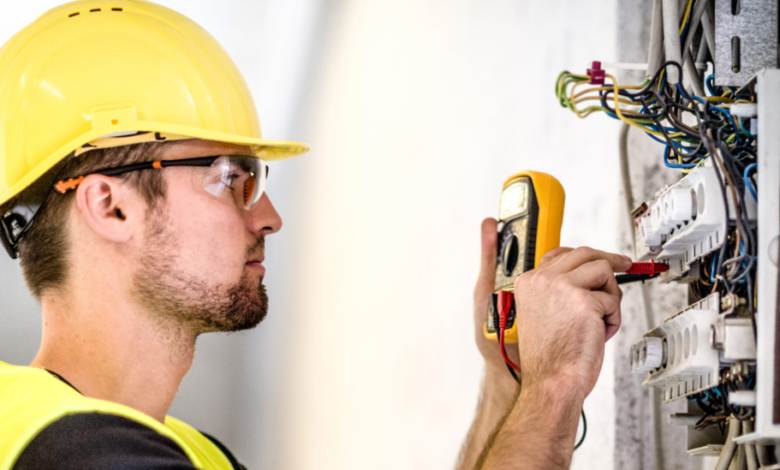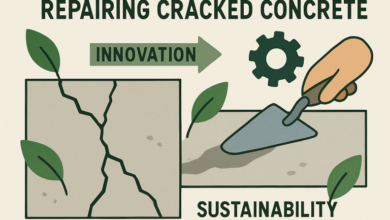How to Identify Potential Electrical Hazards Before They Become Problems

Introduction
Electrical hazards are among the most common causes of residential fires and injuries, often striking without warning or obvious signs. Unsafe wiring, outdated systems, and neglected maintenance can all contribute to hidden dangers that may go unnoticed for years. Spotting the subtle signs of electrical issues early can greatly reduce the risk of property damage or harm to loved ones. Homeowners in all areas, including those looking for Taylors, SC electric panel upgrades by licensed electricians, should be vigilant about routine electrical safety in their homes. This guide outlines the most common electrical hazards, the warning signs you should never ignore, and essential preventive measures you can take right now.
Understanding potential dangers, from overloaded circuits to outdated wiring, empowers you to address them before they become major problems. Whether you live in an older home with original wiring or are planning modern renovations, taking proactive steps can help keep your household safe and give you peace of mind.
Common Electrical Hazards
1. Overloaded Circuits
Overloading occurs when too many devices draw power from the same circuit, pushing your system beyond safe capacity. Modern households use more electronic devices than ever, increasing the risk of accidental overloading, especially in older homes where circuits were never designed for today’s power usage. This can manifest as overheated wall outlets that feel warm or hot to the touch, discolored or charred switch plates, or flickering lights when you add a new appliance. An overloaded circuit might also cause circuit breakers to trip frequently or fuses to blow repeatedly, indicating that your system struggles to keep up with demand. If left unaddressed, an overloaded circuit can spark a fire or cause damaging short circuits, making it crucial to swiftly recognize and remedy these warning signs.
2. Damaged Extension Cords
Extension cords are intended only for temporary use, yet many households leave them permanently in place because they lack sufficient outlets. Over time, exposure to foot traffic, bending, and pinching can result in cracked insulation, fraying, or exposed wires—a hazard made worse if cords get pinched behind furniture or under rugs. Such damage poses a fire hazard and a risk of electrical shock, especially if the wires inside become exposed to moisture or physical contact. It’s important to regularly inspect extension cords, replace any that show signs of wear, and avoid using them as a permanent wiring solution. Using power strips or multiple extension cords linked together (“daisy-chaining”) also increases the risk of overheating, which can result in fires if not corrected.
3. Buzzing Sounds from Outlets
Electricity should flow silently through your home’s wiring and devices. Unexpected buzzing, crackling, or sizzling near outlets or switches typically signals loose wires, corroded terminals, or deteriorating connections inside the wall—issues that can go undetected for extended periods. Such sounds might start subtly but often increase over time as connections degrade. These issues result in increased resistance, generating heat and ultimately igniting surrounding materials, leading to dangerous electrical fires. At the first sign of these sounds, shut off power to the affected circuit using your breaker panel and consult an electrician to identify and fix the cause before it escalates.
4. Flickering Lights
Persistent flickering or dimming of lights may point to power fluctuations, faulty wiring, or overloaded circuits, especially if multiple lights or rooms are affected. Occasional flickering can result from a dying bulb, which is quite different from widespread dimming, which can indicate loose connections or significant electrical load issues across your entire system. Recurrent flickering might also suggest that your electrical panel is struggling to distribute power properly, signaling either outdated equipment or a need for additional capacity. Frequent episodes should prompt a wiring evaluation and may indicate the need for electrical system upgrades or professional troubleshooting to prevent larger problems.
5. Hot Ceiling Fixtures
Ceiling fixtures can become unsafe when overly powerful bulbs or insufficient or loose insulation are present. Excess heat has little chance to dissipate from the recessed area around a ceiling fixture, which can cause wiring and insulation to break down more rapidly over time. Feeling for warmth around lighting fixtures periodically can help you catch problems early and make informed decisions about the safe use of bulbs and fixtures. If a fixture is hot to the touch, always switch it off, check the bulb for proper wattage, and ensure installation matches safety guidelines. Improper installation or poor maintenance are both risk factors for overheating.
See also: Trending Tech Trend for iOS App Development in Houston
Preventive Measures
1. Regular Inspections
Schedule comprehensive electrical inspections every three to five years, or sooner if you’ve recently moved into an older home or completed a major renovation. These inspections should include checking all visible wiring, outlets, switches, and the electrical panel for signs of wear or code violations. Professional electricians can detect outdated wiring, unsafe connections, overloaded circuits, and worn-out components before they result in bigger problems. Newly purchased homes are especially good candidates for an inspection to verify code compliance. Suppose your home or building is over 40 years old. In that case, you may need even more frequent inspections due to the natural decline in wiring insulation and the increased power demands of modern appliances.
2. Proper Use of Extension Cords
Only use extension cords for temporary power needs and select cords rated for the specific appliances they’ll serve, ensuring adequate load capacity for the devices plugged in. Never use pinched, cracked, or cords that show any sign of overheating. Power strips and cords should never be daisy-chained or hidden under rugs, as this traps heat and can cause them to overheat and potentially ignite. Add new outlets or upgrade your electrical system to accommodate permanent electronic setups instead of relying on extension cords when possible. If you constantly need more outlets, that’s a clear signal to call a licensed electrician to improve your home’s capacity safely.
3. Educate Household Members
Sharing knowledge about electrical safety with family members can drastically reduce the likelihood of accidents, especially in homes with children or elderly residents. Teach everyone to recognize the signs of electrical issues, such as tripped breakers, discolored outlets, or any outlets near water sources that should be protected by GFCIs (ground fault circuit interrupters). Reinforce the importance of not overloading power strips, and never use electronics or appliances if hands are wet or standing in water. Establish simple rules—such as turning off appliances when not in use and reporting unusual sights, sounds, or smells—to promote ongoing vigilance throughout the household.
When to Call a Professional
Certain warning signs indicate serious electrical problems that should never be handled without expert help. Burning smells from outlets or switches, recurring tripped breakers, outlets that spark when plugging or unplugging devices, or any black soot marks indicate urgent electrical faults. If ignored, these issues can quickly escalate into full-blown electrical fires or catastrophic system failures. Qualified professionals are trained to troubleshoot, repair, and ensure compliance with current safety standards, using specialized tools and techniques to pinpoint even hidden hazards and deliver code-compliant repairs.
Final Thoughts
Early identification and prevention are your best defenses against electrical hazards in the home. You can safeguard your family, property, and peace of mind by scheduling regular inspections, following safe usage protocols, and remaining alert for warning signs. Invest in preventative measures, educate others, and never underestimate the power of an annual inspection or a quick response to an unusual sound or odor. Don’t wait for a small issue to become a serious emergency—take action now and enjoy a safer home environment for years.




